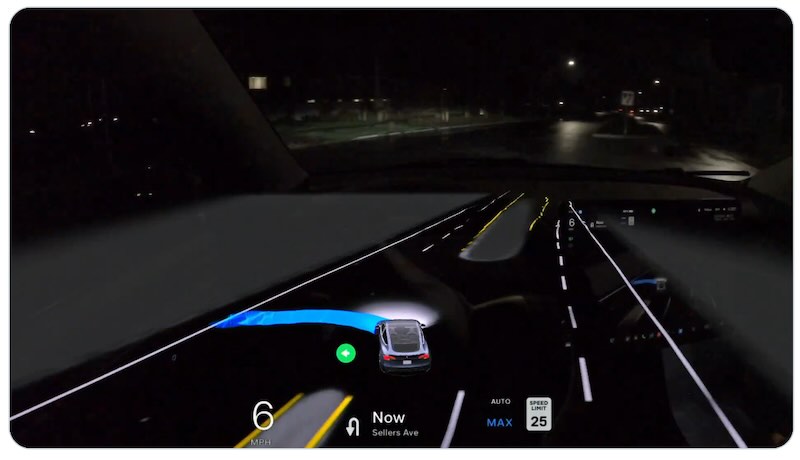For automotive AI systems, negotiating complex maneuvers like U-turns represents a daunting frontier separating today’s capabilities from true autonomy. Or so conventional wisdom implies. According to Tesla though, their latest FSD beta v12.2.1 pulled off this roadway rite of passage through sheer observational learning – no special training required.
Video evidence from the ardent “AI Driver” depicts FSD beta v12 handily executing a textbook U-turn amidst typical suburban traffic scenery. An impressive feat considering the dicey visibility, tight confines, and judgement calls navigating such reversals demand.
But here’s the real kicker: As Tesla Autopilot lead Paril Jain revealed, zero engineering resources dedicated to “making U-turns work” enable this viral accomplishment. FSD simply absorbed enough real-world visuals of humans performing the maneuver and…absorbed the skill organically through its neural nets.
“All it took was feeding v12 with a large number of videos of people making U-turns, and it learned how to handle them,” Jain explained matter-of-factly. Turns out life’s greatest teacher sometimes requires no formal curriculum.
The profound implications of Jain’s casual revelation are tough to overstate. By deploying massive, effectively unconstrained training datasets of everyday road scenarios, Tesla’s Autopilot stack appears capable of independently mastering driving fundamentals once considered AI edge cases. No rules-based hardcoding, corner cases, or explicit tuning required – just pure machine learning vibing off the collective human experience.
Combined with rapid real-world iteration enabled by Tesla’s unrivaled fleet learning feedback loop, FSD could theoretically leapfrog its way to functional autonomy faster than anyone imagined simply by rabidly consuming driving clips. U-turns represent just the opening salvo.
Of course, isolated successes remain far from solved self-driving. But FSD’s self-taught U-turn feat offers a tantalizing glimpse at AI’s generalized capability to transcend conventional developmental constraints. Maybe the roadmap to autonomy was inside those training video terabytes all along?
